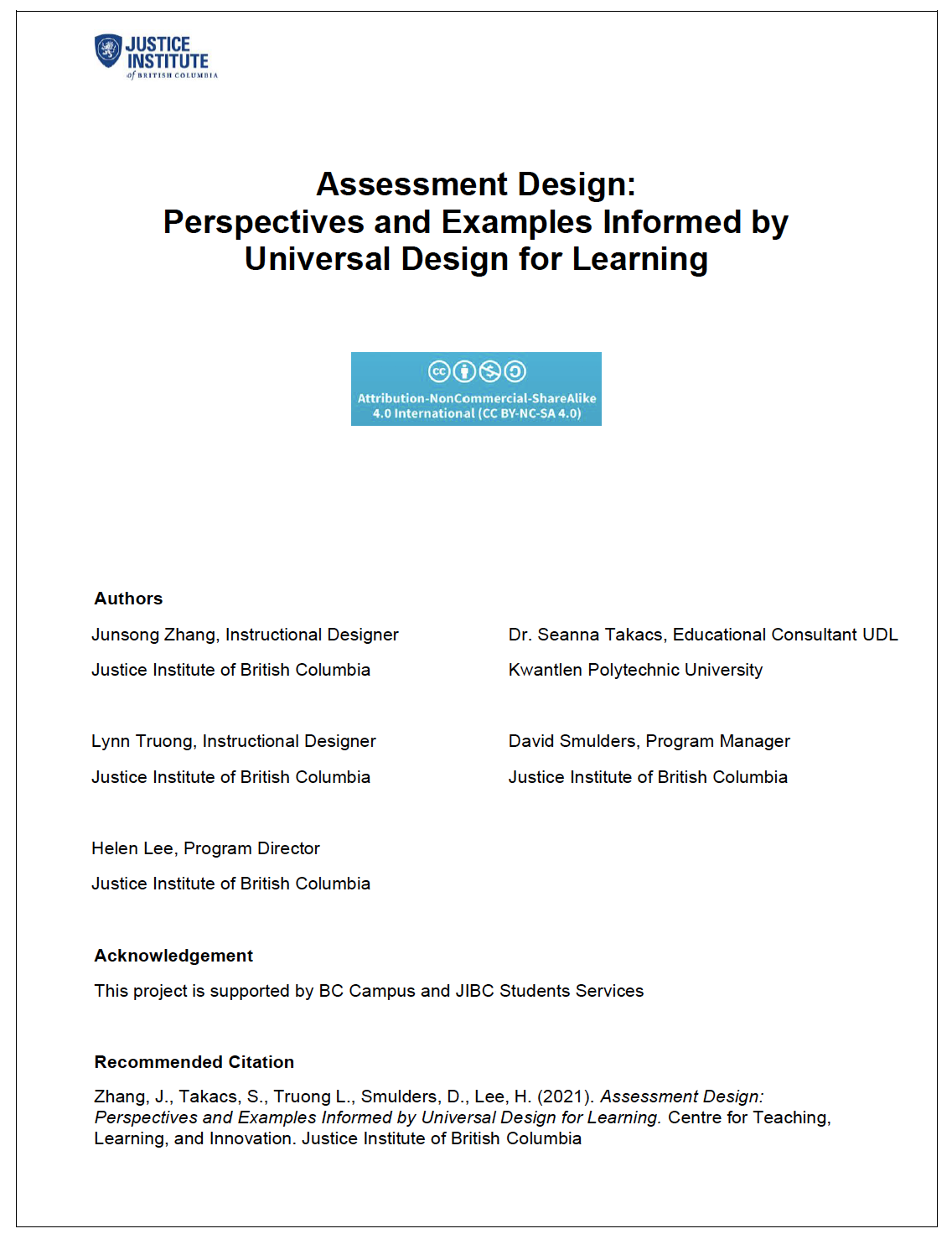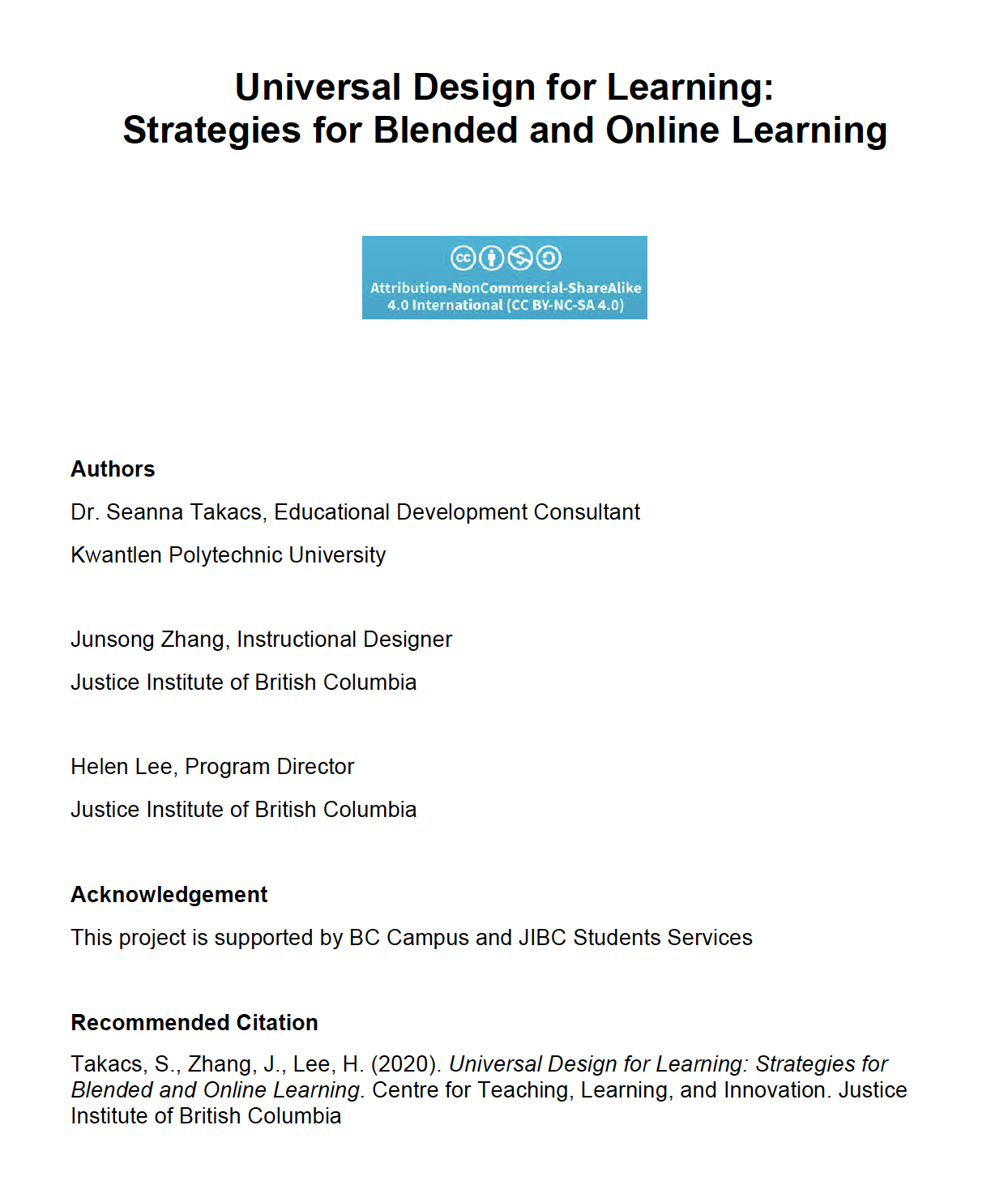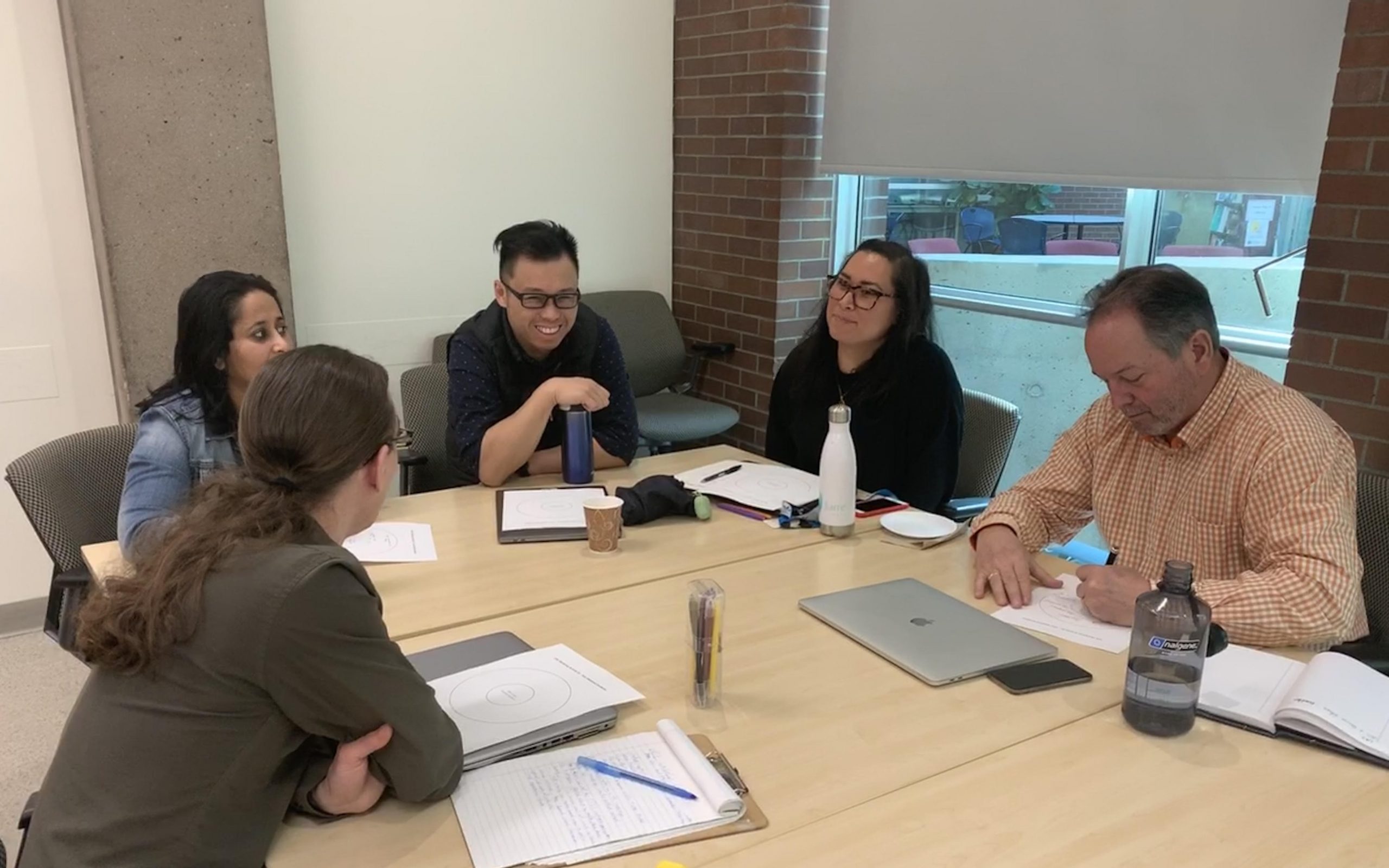Many of you are probably aware that I have been working with my colleagues on a series of UDL workbooks and workshops over the past year and a half, and finally June 2021 witnesses the completion of our last workbook that focuses on assessment design.
I have to admit that this journey is very much like finishing a marathon that I never imagined myself embarking on, yet there we are. We made it, with all the great ideas and relentless revisions from Seanna, Lynn, Dave, Helen, and myself!
So here is a brief introduction to the workbook from Dave:
“In this workbook, we consider how we, as educators, can design assessments to be more inclusive, accessible, and engaging for our students. We also include several examples from JIBC courses and consider what features and characteristics can help us recognize and design UDL assessments in our own courses.”
To access this workbook, click on the image below:


 Photo from the UDL Workshop
Photo from the UDL Workshop